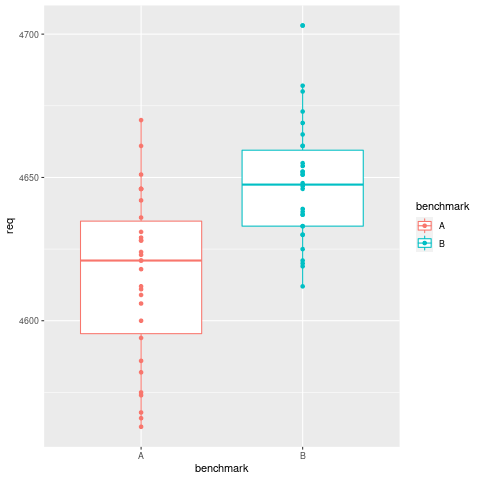I am trying to calculate whether the difference between the two benchmarks is statically different or not.
The input is req/sec of a HTTP Server and I'm using scipy.stats.ttest_ind to calculate the p-value.
A1 = [
4670, 4646, 4612, 4618, 4646,
4609, 4623, 4629, 4566, 4628,
4582, 4636, 4621, 4574, 4624,
4563, 4651, 4642, 4586, 4621,
4606, 4628, 4575, 4631, 4646,
4600, 4594, 4661, 4568, 4611
]
B1 = [
4630, 4655, 4652, 4633, 4637,
4661, 4625, 4680, 4647, 4639,
4633, 4661, 4638, 4621, 4630,
4682, 4703, 4665, 4652, 4648,
4673, 4651, 4669, 4646, 4612,
4654, 4651, 4619, 4637, 4620
]
st.ttest_ind(A1, B1)
# Ttest_indResult(statistic=-4.855056212284194, pvalue=9.47100493260572e-06)
Why the value is 9.47100493260572e-06? I was expecting to see a value bigger than 0.05 because the input is pretty similar and the means are relatively close, too: 4615 vs 4647
Am I missing something?



